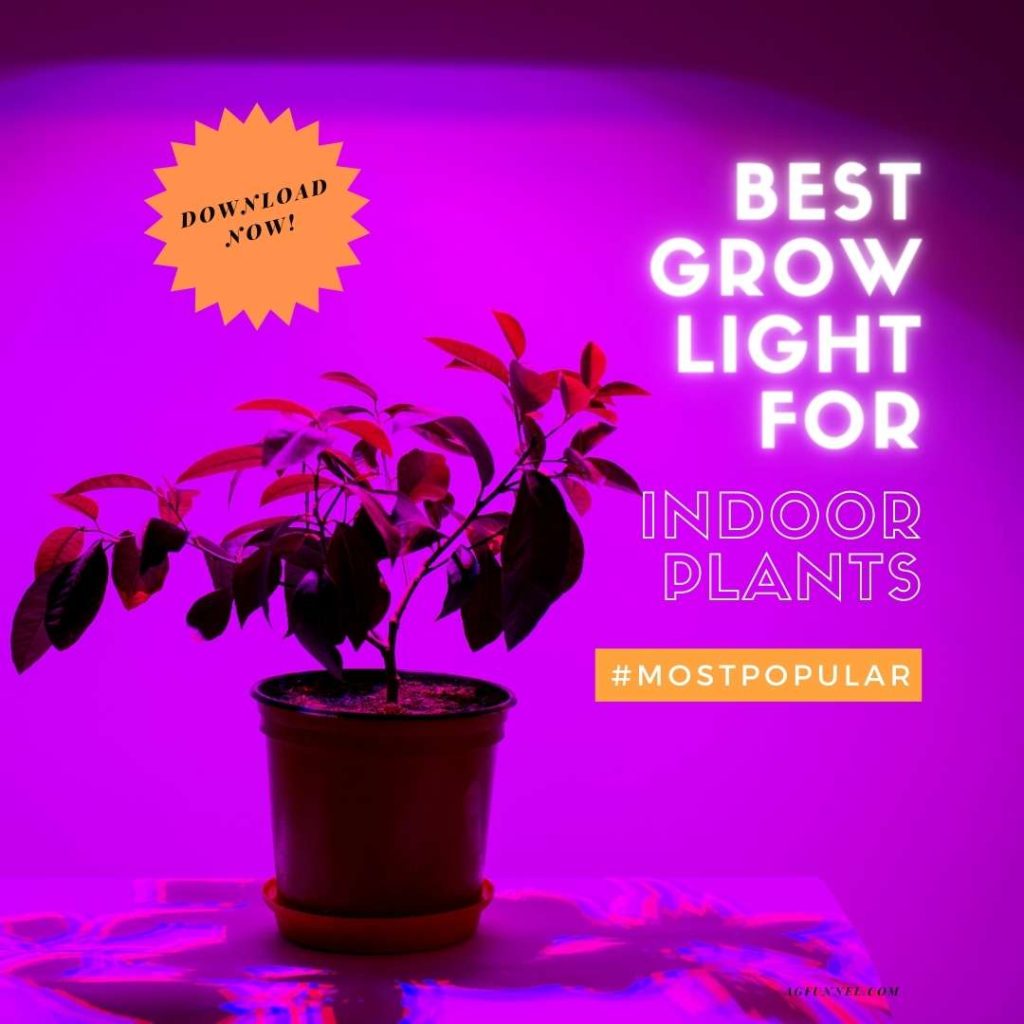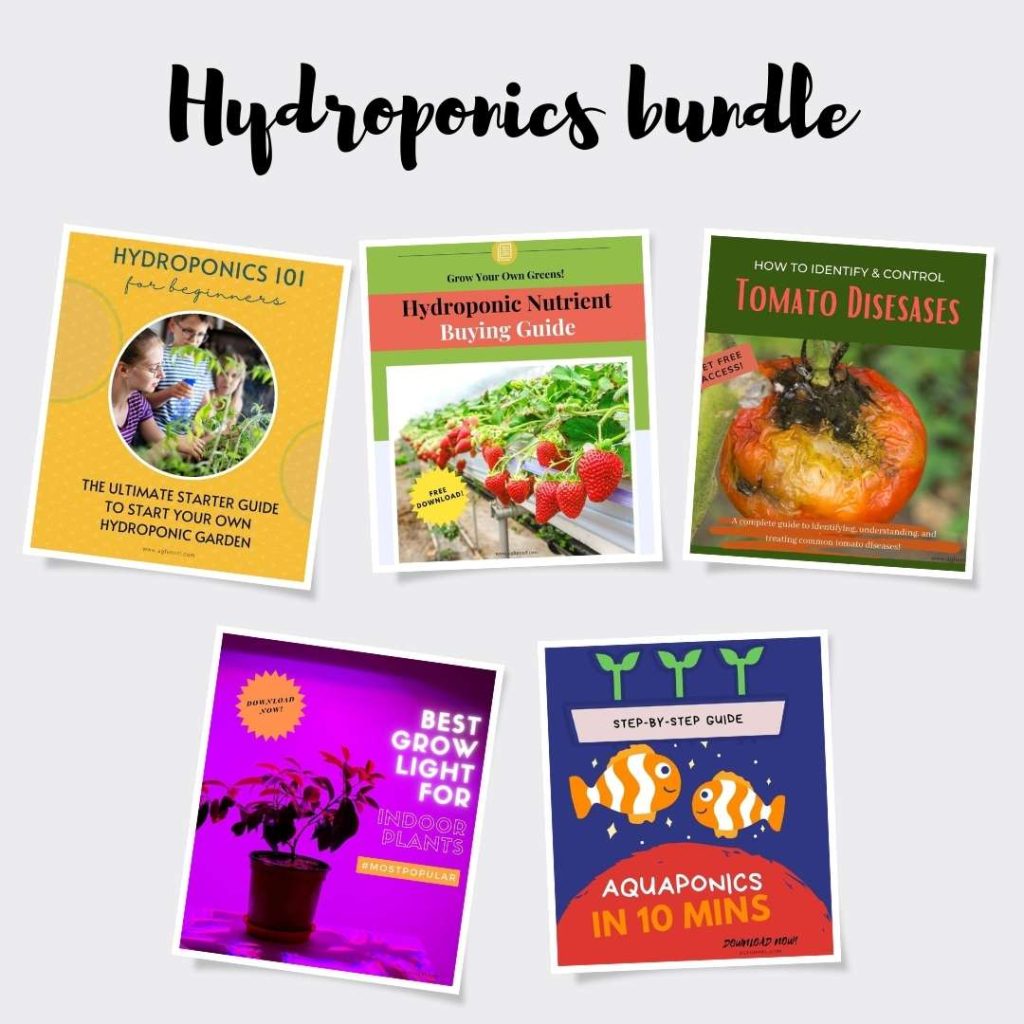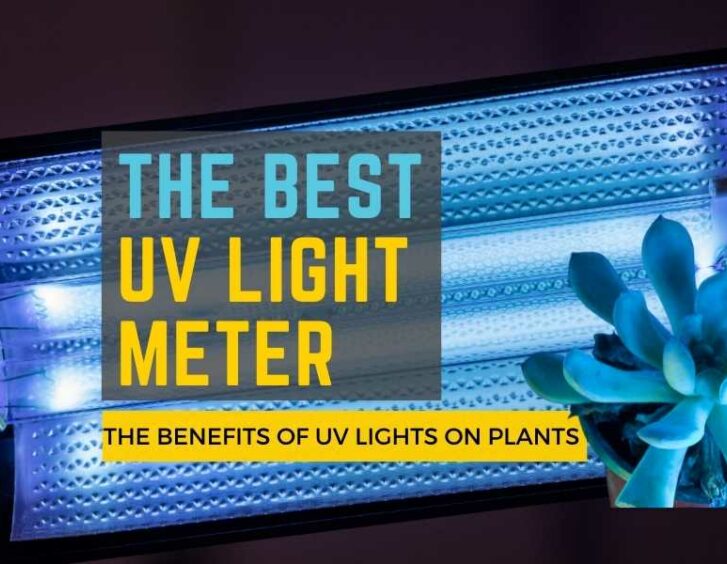Looking to ensure that your plants are getting all the light they need? A UV light meter is essential for gardeners and growers who want to optimize their plant growth. But with so many different UV light meters available on the market, how do you know which is right for your needs? We will also discuss different UV light levels and various plants' best UV light meters.
Overview of the best UV light meter
Most Handy
Extech UV505 Pocket UV-Ab Light Meter
- Measures Wavelength: 290-390 nm
- LCD Display
- Battery Operated
- Pocket Size
Best Overall
General Tools Digital UVA/UVB Meter
- Measures Wavelength: 280-400 nm
- LCD Display
- Battery Operated
- Comes With Tripod & Magnetic Mount
Most Accurate
Solarmeter Model 6.5 UV Index Meter
- Measures Wavelength: 280-400 nm
- LCD Display
- Battery Operated (9V)
- 6.5 UV Index Meter
- NIST-Traceable Accuracy
What is a UV light meter, and what does it do?
There are two types of UV light depending upon wavelength: UV-A and UV-B. UV-A light has a wavelength between 315 and 400 nm and is typically used for UV curing in industrial settings. Plants do not respond to UV-A and thus do not require UV-A meters. UV-B light has a wavelength between 280 and 315 nm and is more commonly used to measure UV radiation under grow lights. UV-B can harm plants if exposed to high levels, so it's important to choose a UV light meter to accurately measure UV-B levels.
A UV light meter is a device used to measure the intensity of UV radiation. UV light meters can vary in their sensitivity, accuracy, and measurement range. Some are designed to measure UV radiation levels under indoor grow lights, while others can also be used outdoors or in greenhouses to measure UV exposure from sunlight.
Plants need UV radiation to grow and thrive. UV levels can vary depending on the type of plant, so it's important to choose a UV light meter that suits your specific needs. For example, succulents and cacti prefer high UV levels, while shade-loving plants like ferns do not need as much UV exposure.
How does UV light affect plants?
UV light is an essential part of the process through which plants produce energy. UV radiation interacts with pigments in the leaves and triggers a reaction that converts carbon dioxide into oxygen, releasing life-giving energy. UV levels also influence other important plant processes, such as photosynthesis, photomorphogenesis (the effects of UV on plant growth), and UV tolerance.
Some of the benefits of UV light for plants include:
Higher Flower Quality, Potency, & Weight: UV light can help improve your plant's overall quality and productivity. UV radiation increases photosynthesis rates and enhances chlorophyll production, leading to healthier, more robust flowers and increased yields. UV light also increases UV-B levels in the plant, which helps to increase cannabinoid and terpene production.
Stronger Plants & Increased UV Protection: UV radiation is essential for proper plant health. UV exposure helps to strengthen plant cell walls, making them more resistant to disease and pests. UV light can also help plants produce natural UV protection compounds that help to shield them against UV damage.
Increased photosynthetic rate: UV radiation has been shown to increase the photosynthetic rate of many types of plants, including wheat, rice, and corn. UV exposure can also improve plant growth and yield due to the increased energy production and reduced oxidative stress caused by UV exposure.
Faster germination: UV light has also been shown to enhance the germination rate of many plants, including lettuce, beans, and wheat. UV lamps can provide UV radiation during seedling or tissue culture stages to speed up germination.
The best UV light meter review
Here are the best UV light meter available in the market:
1. Extech UV505 pocket UV-Ab light meter (most handy)
Features:
- The sensor has a wavelength range of 290 to 390nm and can withstand UV-AB light sources up to 40.00 MW/cm2.
- The LCD is backlit for easy viewing, and the data hold function freezes the current reading on display.
- This pocket-sized battery-operated gadget is perfect for on-the-go use!
- Requires 2 AAA batteries (included).
2. General tools digital UVA/UVB meter (best overall)
Features:
- The UV light meter can measure long and medium-wave UV-A/B. It is specially calibrated to Wavelength: 280-400 nm for maximum accuracy.
- The unit measures mW/cm2 or w/m2, and has an easy-to-read backlit dual 4-digit LCD with high and low measurements.
- The meter has a 20-measurement memory and automatically records the time (interval). It also comes with a tripod and magnetic mounts.
3. Solarmeter model 6.5 UV index meter (most accurate)
Features:
- Measures wavelength: 280-400 nm
- LCD display
- Battery-operated (9V)
- 6.5 UV index meter
- NIST-traceable accuracy
When should you give plants UV light?
Many growers use UV lamps, and traditional grow lights to take advantage of UV radiation benefits. UV light can be used during any growth stage, although UV-B levels are more important for flowering and harvesting. UV lamps are often used during the vegetative phase (before flowers have formed) and the pre-flowering phase (before buds have fully developed) to improve UV-B levels and increase plant growth. UV lamps may also be used during the flowering cycle for UV-B enhancement and increased yields.
Can UV light be harmful to plants?
High levels of UV radiation can harm many plants, so choosing a UV light meter that provides accurate UV measurements is important. UV-B is particularly damaging to plant foliage and should be monitored closely for optimal growth. UV radiation can damage plants in several ways, including:
- UV-B can cause leaf scorching and sunburn
- UV-A radiation can cause bleaching and death of plant tissues
- Excessive UV exposure can lead to reduced growth rates, lower yields, and increased susceptibility to disease and pests.
- UV radiation can damage DNA and disrupt cell division, leading to slower growth
The benefit of using a UV light meter
There are many benefits to using a UV light meter in your garden or grow operation. It includes:
Accuracy: UV light meters provide highly accurate UV measurements, allowing you to control UV exposure levels for optimal plant growth and health. These meters are also designed to withstand high UV levels, which can help ensure accurate readings even in intense UV environments.
Flexibility: UV light meters can be used on many plants and in many different UV environments. Whether you're working with indoor plants or outdoor gardens, these meters provide accurate UV measurements that allow you to adjust UV exposure levels for your specific plant types.
Ease of Use: UV light meters are designed to be easy to use, with features like automatic UV measurements and built-in UV sensors that simplify optimizing your UV exposure levels. Most UV light meters include additional features like data logging, alarms, and other advanced capabilities to make UV monitoring even easier.
Efficiency: A UV light meter can help optimize your UV radiation levels, saving you time and energy. You can make adjustments to improve UV levels and maximize plant growth by measuring UV exposure. And because UV light meters are designed for ease of use, you can quickly and easily get the UV readings without wasting time or energy on maintenance.
Safety: UV radiation can harm plants and people, so UV light meters are essential for safely keeping your garden or grow operation. These meters provide accurate UV readings that allow you to take steps to protect yourself and your plants from overexposure to UV radiation.
Cost-Effectiveness: UV light meters are cost-effective to maximize UV exposure levels and improve plant growth in your garden or operation. With accurate UV readings and advanced features like data logging, alarms, and reporting, UV light meters can help you optimize UV radiation levels to get the most out of your plants while saving time, energy, and money.

Download our complete guide to choose the best grow lights for indoor plants
Types of UV meter
Several types of UV meters are available, each designed for specific applications and environments. Some common types of UV meters include:
Handheld UV meters: These UV light meters are designed for easy portability, making them ideal for gardens, greenhouses, grow operations, and other UV environments. Handheld UV meters are typically small and lightweight, making them easy to carry around.
Desktop UV meters: These UV light meters feature a larger display for easier viewing, making them ideal for indoor environments where UV readings must be monitored frequently. Desktop UV meters are typically designed to be mounted on a wall or other surface for stability and easy access.
UV sensors: UV sensors are a type of UV meter that can be used to automate UV monitoring. These UV meters feature wireless or wired connectivity, sending UV readings directly to computers or other devices for easy monitoring and analysis.
Dataloggers: UV dataloggers are a type of UV meter that can store large amounts of UV data for later retrieval. UV dataloggers allow you to easily monitor UV exposure levels over time and make more informed decisions about UV radiation in your garden or grow operation.
Alarm systems: UV alarm systems are a type of UV meter used to set UV exposure levels and trigger notifications or alarms when these levels are exceeded. UV alarm systems can help you optimize UV radiation in your garden or grow operation, ensuring that your plants receive the right amount of UV light at all times.
How to choose the right UV light meter for your plants?
With so many different UV light meters available on the market, it can be difficult to know which one is right for your needs. Here are a few factors to consider when choosing a UV light meter:
Measurement range: UV light levels can vary widely depending on where you are growing your plants and the UV exposure levels they need. UV light meters with a wide measurement range will be able to provide accurate UV readings no matter where you are growing your plants.
Data logging: UV exposure levels can change daily, and a UV light meter with data logging capabilities will be able to store UV readings for later analysis and monitoring. This feature can help you make more informed decisions about UV exposure in your garden or grow operation.
Alarms: If you are working in an environment where UV radiation levels must be controlled or monitored closely, UV light meters with alarms can help you ensure your plants receive the right amount of UV radiation at all times.
Support: When choosing a UV light meter, it's important to consider whether or not the manufacturer offers technical support and customer service if you have any questions or need help using your UV meter. A UV light meter from a reputable manufacturer is more likely to come with reliable technical support and customer service to help you get the most out of your UV monitoring.
How Does UV Light Meter Help in Pressure Canning?
When using top 5 pressure canners, a UV light meter can help ensure that food is safely preserved by measuring the UV intensity in the canning process. This helps determine the appropriate exposure time needed to kill harmful bacteria and prevent spoilage, leading to safer and more effective canning.
Final thoughts on UV light meters for plants
A UV light meter can be an essential tool if you are a gardener or grower looking to optimize UV radiation levels in your garden or grow operation. With their wide range of measurement capabilities, data logging, alarm features, and other advanced features like reporting, UV light meters make it easy to monitor UV exposure levels and ensure that your plants receive the right amount of UV light at all times. When choosing a UV light meter, it's important to consider measurement range, data logging, alarms, and support from the manufacturer to get the most out of your UV monitoring.

Learn everything about hydroponics, from the basics to advanced techniques.



















